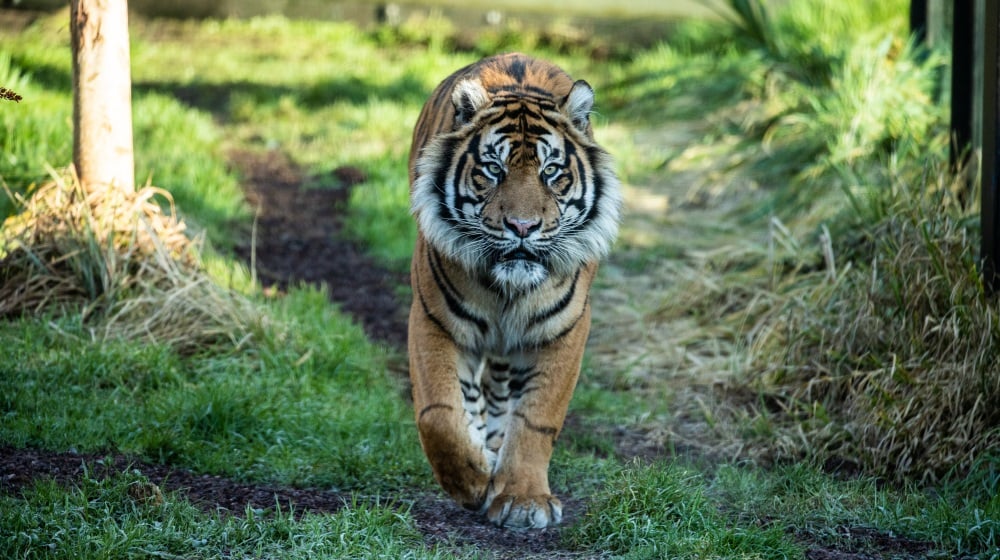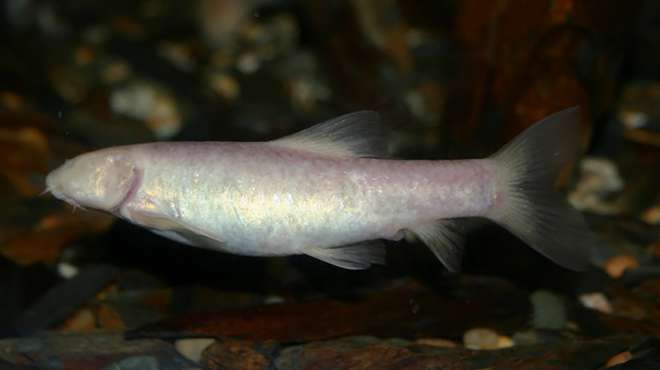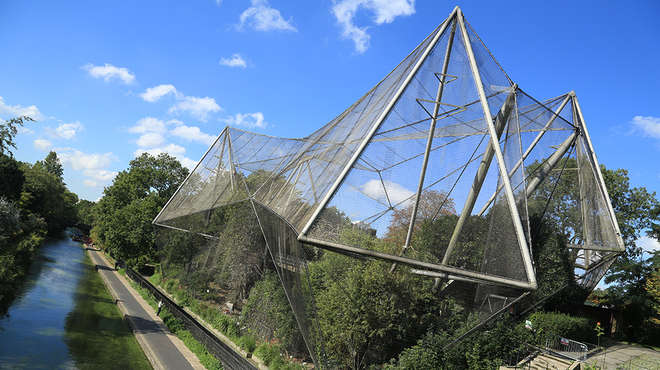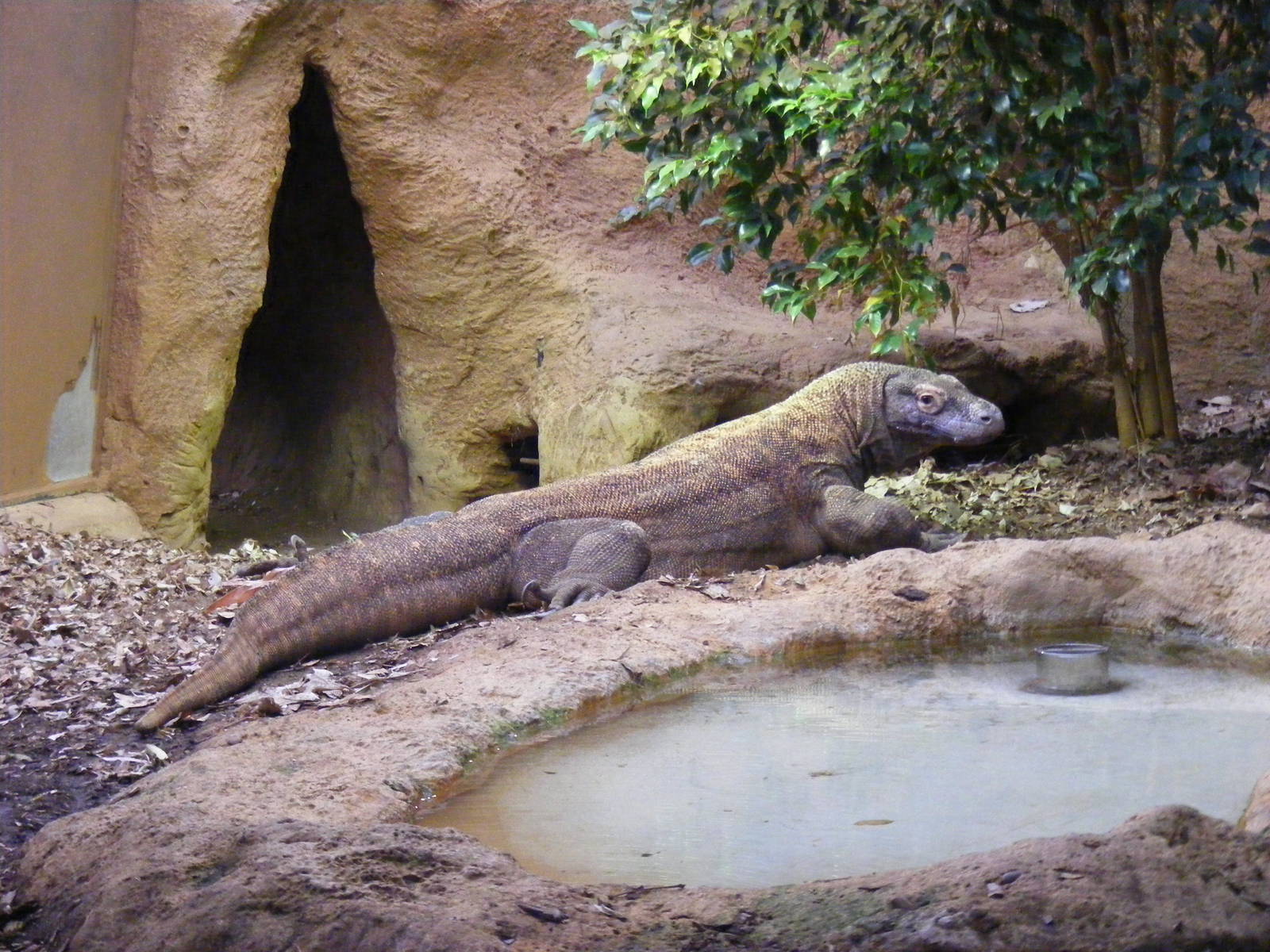London Zoo

The London Zoo is the oldest scientific zoo in the world. It first opened its doors in London on April 27, 1828, with the intention of serving as a scientific research collection. The animals from the Tower of London menagerie were transferred to the zoo's collection around 1831 or 1832. It was first made available to the public in 1847. It now houses a collection of 673 animal species and 19,289 individuals, making it one of the largest in the United Kingdom. The zoo is also known as Regent's Zoo.
It is operated by the Zoological Society of London (founded in 1826) and is located on the northern side of Regent's Park, on the border between the City of Westminster and the borough of Camden (the Regent's Canal flows through it). The Society also maintains a larger site at ZSL Whipsnade Zoo in Bedfordshire, where larger species like elephants and rhinos have been relocated. ZSL London Zoo was the first scientific zoo, as well as the first reptile house (1849), first public aquarium (1853), first insect house (1881), and first children's zoo (1938).
ZSL receives no government financing and relies only on 'Fellows' and 'Friends' memberships, entry fees, and sponsorship to generate revenue.
The Lions' Land

Land of the Lions is an exhibit for Asiatic lions at ZSL London Zoo. The enclosure is 2,500 square metres in size and was inspired by India's Gir Forest National Park. The display, which also houses a troop of Hanuman langurs and a band of dwarf mongoose, shows how the lions' native habitat intersects with the neighbouring urban areas.
Tiger Country

Tiger Territory is the Sumatran tiger habitat at ZSL London Zoo, created by architect Michael Kozdon and officially opened by the Duke of Edinburgh in March 2013. The zoo presently has one tiger, a male named Asim, who came in January 2019 from Denmark. On February 8, 2019, Asim murdered Melati, a 10-year-old female tiger at the zoo. Jae-Jae, Melati's prior roommate, had been relocated to France the previous month. Jae-Jae and Melati had two cubs in June 2016: Karis, a girl, and Achilles, a male. They also had three cubs in February 2014: two boys named Budi and Nakal, and one girl named Cinta. The enclosure is 2,500 square metres (27,000 square feet) and includes authentic Indonesian plant life as well as a net canopy made of 3mm steel cable supported by four metal supports. Reeves' muntjacs, Northern white-cheeked gibbons, and, beginning in August 2020, a pair of Buru babirusas are also housed in the exhibit.
The Gorilla Kingdom

The Gorilla Kingdom, which was inaugurated by the Duke of Edinburgh in March 2007, is home to a population of western lowland gorillas and consists of a moated island with an indoor gym for the gorillas to use. The London Zoo presently has four gorillas: two adult females named Mjuuku and Effie, an infant female named Alika (daughter of Mjuuku and former silverback Kumbuka), born in December 2014, and a baby boy named Gernot born in November 2015. [26] Formalized paraphrase Smaller enclosures house eastern black and white colobus monkeys, white-naped mangabeys, and crested black macaques in the Gorilla Kingdom area.
Going to Africa
Into Africa, an Africa-themed section, debuted in April 2006. Chapman's zebras, warthogs, okapis, Rothschild's giraffes, pygmy hippos, and African wild dogs are among the animals on display in this region. The giraffe enclosure includes a high-level observation platform that allows visitors to get up up and personal with the giraffes, and the 1837 Giraffe House is the world's oldest zoo building that is still in use for its original function.
Life in the Rainforest and at Night

Rainforest Life is a walk-through indoor exhibit that features a variety of rainforest animals. Two-toed sloths, golden lion tamarins, emperor tamarins, red titi monkeys, red-faced spider monkeys, huge hairy armadillos, Geoffrey's marmosets, cotton-top tamarins, Goeldi's marmosets, southern tamandua, and Rodrigues flying fox are among the species found in the main forest walk-through. The structure also shelters nocturnal wildlife like as the Mohol bushbaby, Seba's short-tailed bats, slender lorises, pottos, rakali, Malagasy giant rats, and blind cave fish in a darkness region dubbed "Nightlife."
A baby tamandua named Star was recently added to the zoo's family. On December 13, 2019, the baby was born.
Outback / Mappin Terraces
The Outback is an Australia-themed exhibit that houses emus and Bennett's wallabies in groups. The enclosure, formerly known as "The Mappin Terraces," was built in 1913 and includes an artificial rocky ledge made of concrete blocks for animal enrichment. It was initially intended for a wide range of animals, including bears, penguins, sheep, goats, and wild boar.
The aquarium

From 1853 to 2019, there was an aquarium in the zoo. Philip Henry Gosse, who originated the term "aquarium," designed and stocked the zoo's first aquarium, which was also the world's first public aquarium. The most current aquarium, built next to the Mappin Terraces in 1921, was officially opened in April 1924 by King George V and his wife Queen Mary.
The aquarium was divided into three halls, each of which housed a different kind of fish and other aquatic creatures. The first hall housed mostly freshwater species like rudd and European eels, as well as some saltwater species including broad sea fans, uarus, and seahorses that were part of numerous conservation efforts and captive-breeding programmes. The second hall included a variety of coral reef fish species from around the world, including clownfish, copperband butterflyfish, and regal tangs, as well as actual coral. The third hall featured Amazon River species such as red-bellied piranhas, angelfish, arapaimas, and ocellate river stingrays. In addition to the three halls, the aquarium had the "Big Fish Tank," which hosted enormous fish species that were all former pets and had to be rescued because their owners lacked the necessary equipment or expertise to care for them. Tamaqui, catfish, and pirapitinga are among the species found in the Big Fish Tank.
Some creatures were relocated to a new aquarium at ZSL Whipsnade Zoo, while others were scheduled to be housed in a new corals exhibit at the B.U.G.S building in 2020.
Adventure with Animals

Animal Adventure (previously known as the Ambika Paul Children's Zoo) opened in 2009 and is mostly geared at children, with playgrounds and a drinking fountain. Domestic animals such as sheep, donkeys, llamas, alpacas, goats, and ferrets, as well as unusual breeds such as silkie chickens, rex rabbits, and kunekune pigs, appear in Animal Adventure. Yellow mongooses, crested porcupines, aardvarks, prairie dogs, ring-tailed coatis, and one of the zoo's two groups of meerkats are among the exotic species on display (the other group live in an enclosure next to the Rainforest Life building). The meerkat enclosure has a tunnel down which children can crawl until they reach a see-through dome that lets them to peer straight into the cage.
A big fire broke out at Animal Adventure at 6 a.m. on Saturday, December 23, 2017. It was brought under control by 9:30 a.m. after spreading to the cafe/shop, which was reported to have been seriously damaged in three quarters. Misha, a nine-year-old aardvark, was pronounced dead, while four meerkats were proclaimed missing and assumed dead. On Christmas Eve, the zoo reopened.
The Reptile Shelter

The Reptile House, one of London Zoo's most well-known structures, was designed by Joan Beauchamp Procter and Sir Edward Guy Dawber and opened in 1927.
[29] Formalized paraphrase It is home to Jamaican boas, Philippine crocodiles, western diamondback rattlesnakes, Annam leaf turtles, Fiji banded iguanas, Northern caiman lizards, puff adders, king cobras, tokay geckos, emerald tree boas, and Yemen chameleons. A restored amphibian exhibit opened to the public in December 2012, showcasing amphibians such as Chinese giant salamanders, axolotls, caecillians, and numerous varieties of poison dart frog.
The Galápagos Giants

Giants of the Galápagos debuted in 2009 to commemorate Charles Darwin's 200th birthday,[34] and is home to three female Galápagos giant tortoises named Dolly, Polly, and Priscilla. The display includes a huge indoor area with a heated pond and underfloor heating, as well as an outside paddock with two heated pools, one of which is a naturalistic clay wallow.
Raja is a male Komodo dragon.
Sir David Attenborough dedicated the Komodo dragon cage at London Zoo in July 2004. The zoo once had two Komodo dragons, Rinka, a female, and Raja, a male. Raja's exhibit was used in an action sequence in the 2012 James Bond film Skyfall. [36] Formal paraphrase After the previous dragons perished, a new male dragon named Ganas (one of the parthenogenic hatchlings from Chester Zoo) moved to London in 2015. Their enclosure is built to mimic the dragon's original environment of a dry river bed, and sounds of Indonesian birds are played into it on a daily basis.
B.U.G.S.

B.U.G.S. (Biodiversity Underpinning Global Survival, formerly known as Web of Life) is housed in The Millennium Conservation Centre and strives to educate the public about biodiversity. The structure houses about 140 species, the vast majority of which are invertebrates. Leafcutter ants, jewel wasps, golden mantella frogs, brown rats, bird-eating spiders, desert locusts, naked mole rats, leaf insects, moon jellyfish, Polynesian tree snails (Partula), Giant African land snails, cave crickets, fruit beetles, and black widow spiders are just a few of them. The Millennium Conservation Centre seeks to be environmentally friendly, with materials that require little energy to manufacture and warmth generated by the body heat of both the animals and visitors. In May 2015, the first and only spider walkthrough exhibit in Europe, In With the Spiders, debuted in B.U.G.S. It is home to several various varieties of spiders, including the fen raft spider, which is one of the UK's most endangered wildlife.
Penguin Cove

Penguin Beach, which contains Humboldt penguins, debuted on May 26, 2011 and will close on May 26, 2019. A single male rockhopper penguin named Ricky existed here until March 2017, when he was relocated to ZSL Whipsnade Zoo. The pool itself is the largest penguin pool with penguins in an English zoo at the moment. Penguin Beach is accessible for public use for events held outside of the zoo's normal operating hours.
Join the Lemurs!

In with the Lemurs, which opened in March 2015, is a walk-through exhibit that houses a group of ring-tailed lemurs. It also has a family of aye-ayes, white-tailed antsangys, and lesser hedgehog tenrecs residing in the indoor part. The display is designed to look like a shrub forest in Madagascar, complete with loquat and Chusan palm trees.
Get to Know the Monkeys

Meet the Monkeys is a walk-through enclosure that houses a troop of black-capped squirrel monkeys. It was opened in 2005 by comedians Noel Fielding and Julian Barratt of The Mighty Boosh. There is no roof over the exhibit, and there are no barriers between the monkeys and the viewers. It is the zoo's southernmost enclosure.
Paradise for butterflies

Butterfly Paradise, which opened in May 2006, is home to several different kinds of butterfly and moth from around the world, as well as plant types specifically chosen to provide nectar and breeding places for the insects. The clipper butterfly, blue morpho butterfly, atlas moth, zebra longwing, glasswing butterfly, and postman butterfly are among the species on show. Visitors may also see different types of pupae and the creation of new butterflies in the exhibit's caterpillar hatchery and pupa display cabinet.
Safari to See African Birds

The African Bird Safari rebuilt the ancient stork and ostrich house in 2005, replacing cages that were out of date by modern zoo-keeping standards. It is a walk-through exhibit that houses various African bird species such as Von der Decken's hornbills, Bernier's teals, white-faced whistling ducks, Abdim's storks, Fischer's turacos, hamerkops, northern bald ibises, white-faced whistling ducks, superb starlings, blue-bellied rollers, and lilac-breasted rollers.
Snowdon's Aviary

The Snowdon Aviary was completed in 1964 and was planned by Cedric Price, Frank Newby, and Antony Armstrong-Jones, 1st Earl of Snowdon. Since its inception, the aviary has housed a wide range of species.
The Pavilion at Blackburn
The Blackburn Pavilion is a rainforest-themed tropical bird aviary that debuted in March 2008 to replace the zoo's outdated bird house. The structure was initially built in 1883 as a reptile home. The pavilion is home to fifty different exotic bird species, including Socorro doves, scarlet macaws, blue turacos, Mindanao bleeding-hearts, red-crested turacos, violet turacos, scarlet ibis, Victoria crowned pigeons, white-throated toucans, splendid sunbirds, pied avocets, red-and-yellow barbets, red-billed leiothrix One of the pavilion's most noticeable elements is a big complex clock by Tim Hunkin, which stands outside the entrance. Throughout the day, it displays a bird-themed display every thirty minutes.
Others
Greater flamingos, red-billed hornbills, black kites, African harrier hawks, Bactrian camels, red river hogs, military macaws, secretary birds, Hyacinth macaws, blue-throated macaws, meerkats, Oriental small-clawed otters, Rüppell's vultures, and great white pelicans are among the other notable animals in London Zoo.
Developments in the future
The zoo intends to improve accessibility by shifting the main entrance to the east, near to the Broad Walk in Regent's Park. Foster + Partners was hired in November 2016 to redevelop and renovate the Snowdon Aviary with a colobus monkey walkthrough.


